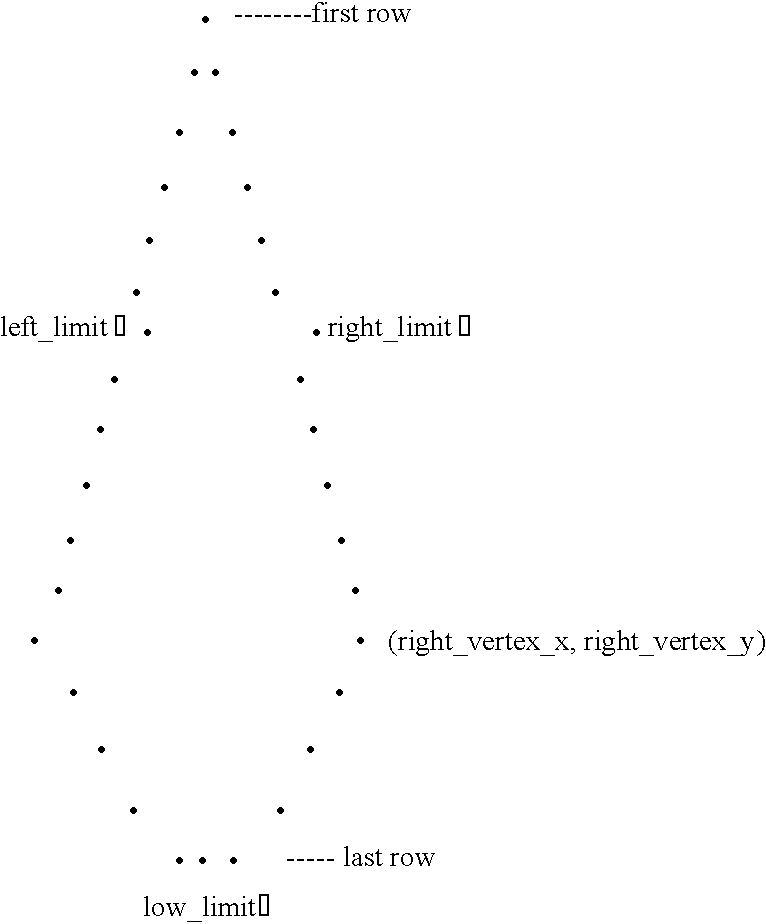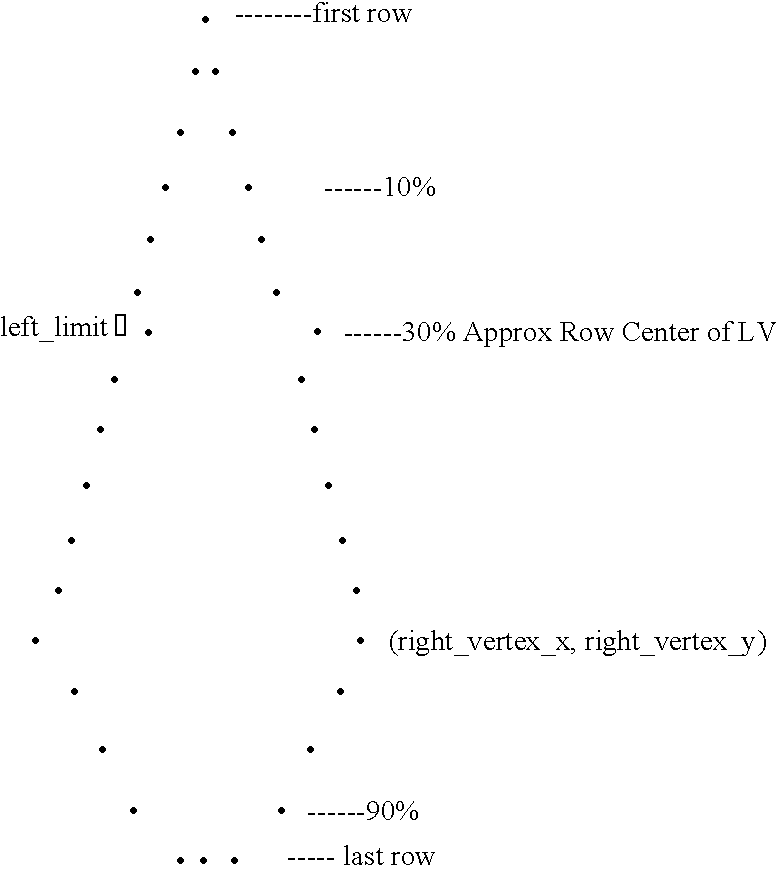Method for automated analysis of apical four-chamber images of the heart
an automatic analysis and digital image technology, applied in image analysis, image enhancement, medical science, etc., can solve the problems of increasing labor intensity, tedious tracing of endocardial borders on two-dimensional echocardiograms, and high subjective selection of borders, so as to maximize the long axis length of the left ventricle
- Summary
- Abstract
- Description
- Claims
- Application Information
AI Technical Summary
Benefits of technology
Problems solved by technology
Method used
Image
Examples
first embodiment
The first step in the automated process of the present invention is to determine the center-point of the left ventricle and a search region for border discrimination. The center-point is estimated in one embodiment by using circular arc filters to determine the approximate positions of the epicardial and endocardial borders. In another preferred embodiment, the center-point is estimated by first determining the position of the posterior epicardium using a circular arc filter, and then making an approximation of the positions of the right and left epicardium using elliptical arc filters. Once the center-point and search regions are estimated, the probable positions of the epicardial and endocardial borders are more closely approximated. In the inventive method, the probable positions of the epicardial and endocardial borders are approximated by generating amplitude distibutions along each oi a number of circular segments based on the computed center-point. In a second preferred embod...
example 1
5.1 Example 1
A Method for Evaluation of Enhancement Operations in Two-Dimensional Echocardiographic Images
The purpose of this Example is to report the methods and results of a locally calculated peak-to-background ratio that can be used to objectively estimate the degree of enhancement achieved in a two-dimensional echocardiographic image.
5.1.1 Methods
5.1.1.1 Data Acquisition
Two-dimensional short-axis ultrasound images were obtained retrospectively from six patient studies performed for routine diagnostic reasons in the clinical echocardiography laboratory at the University of Florida (Gainesville, Fla.). A representative end-diastolic and end-systolic frame from each of these six patient studies was converted from videotape to digital format. Analog-to-digital conversion was carried out to produce a 256.times.240 pixel image at 4-bit depth (16 gray levels). From each of these images a 120.times.140 pixel region of interest was selected by manual windowing. The resulting 12 regions ...
example 2
5.2 Example 2
Automatic Identificaiton of Papillary Muscles in Left-Ventricular Short-Axis Echocardiographic Images
When screening left ventricular short-axis echocardiographic images. cardiologists partly depend on the wall motion and the wall thickness to make an assessment about the patient's cardiac function. Even though computation of wall motion and wall thickness are a simple task, if the endocardial and epicardial borders have been found, efforts at real-time (or near-real time) quantitation have met with limited success.
While a commercially available system has a feature referred to as Automated Border Definition (ABD), the feature uses a threshold method based on the integrated backscatter to identify edges throughout the entire image. As with any threshold method, the ABD feature can be visualized as a method that uses the ultrasound backscatter to create a new surface which has value one at locations with intensity above threshold (tissue) and zero at locations with intens...
PUM
 Login to View More
Login to View More Abstract
Description
Claims
Application Information
 Login to View More
Login to View More - R&D
- Intellectual Property
- Life Sciences
- Materials
- Tech Scout
- Unparalleled Data Quality
- Higher Quality Content
- 60% Fewer Hallucinations
Browse by: Latest US Patents, China's latest patents, Technical Efficacy Thesaurus, Application Domain, Technology Topic, Popular Technical Reports.
© 2025 PatSnap. All rights reserved.Legal|Privacy policy|Modern Slavery Act Transparency Statement|Sitemap|About US| Contact US: help@patsnap.com



